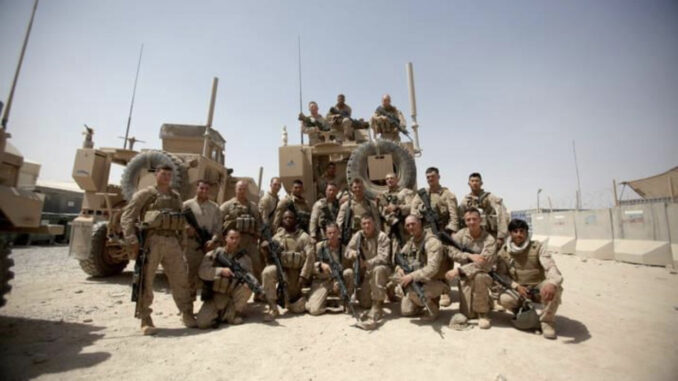
Zach Petroff | Opinions Editor
Nov. 10, 2022
How can you tell if someone has served in the military?
Just talk to them. They will undoubtedly tell you.
This phenomenon of veterans’ eagerness to disclose about their time in the military is perplexing to me. As someone who served in the Marines, I make a concerted effort to not bring up my service.
It is my opinion that civil servants should have a semblance of humility.
This is not a shared opinion among many of my fellow veterans.
There have been many instances where someone who served in the military is overeager to talk about the intimate details of their experiences. More often than not, it seems like their service has morphed their personality. From their hobbies to their clothing and even overzealous political leanings, it has become painfully clear who served.
It was not until this past summer, as I waited 45 minutes on the phone with the Pittsburgh VA Medical Center, that I figured out why so many veterans feel the need to let the world know that they served in the military in every facet that is available to them.
It is because nobody really cares about veterans.
Sure, there is plenty of moral support for those that served this country. There are clothing lines and coffee brands that claim to help bring awareness to the problems that plague veterans. Social media posts, just like the ones you will see Friday, will shape a narrative that people respect those that joined the ranks. Restaurant chains will offer generous discounts for the holiday.
Yet, this is where the support ends. It is mostly lip service.
We are nothing more than strategic tools used to enhance capitalist and political endeavors. We have become faceless mascots, pigeonholed into overwhelming stereotypical facades.
We are boxes to be marked off for marketing purposes.
There are real issues plaguing my fellow veterans that are not addressed. Perhaps it’s because the depths of these problems shatter the narrative that often coincides with the nationalism that is often associated with our military.
The most-obvious issue is the amount of suicides. According to the Centers for Disease Control and Prevention, suicide-related deaths among veterans increase at a greater rate than that of the general United States population. From 2001 to 2019, the rate of suicide among veterans increased nearly 36%, compared to an increase of 30% in the general population. From the same report, published in June, the CDC estimates that everyday, 17 veterans commit suicide.
This is not a recent phenomenon. This is a trend that has been occurring for two decades. The proposed solution from the Department of Defense: Give more money to the V.A.
In what world is it appropriate to reward an institution that continues to fail with an even-larger budget? There’s a theory for this. It’s called the sunk-cost fallacy.
However, the silver lining to this now two-decade long epidemic is that this issue appears to be receiving the level of attention that it deserves.
The same can’t be stated about the rampant sexual assault that occurs to those in the military.
This past summer, the DOD reported that 1 in 12 women and 1 in 67 men experienced unwanted sexual contact between 2018 and 2021.
In the same report, the DOD found that “[In the] fiscal year 2021, the military services received 8,866 reports of sexual assault involving service members as either victims or subjects, which is a 13% increase from reports made in fiscal year 2020. Of the 8,866 reports, 7,249 were from active duty members making an unrestricted or restricted report of sexual assault for an incident they experienced during military service.”
There are about 35,900 members in our military that reported being victims of sexual assault.
The only demographic group that has a higher chance of being sexual assaulted is college students. According to the Rape, Abuse and Incest National Network (R.A.I.N.N.), 13% of all students experience rape or sexual assault through physical force, violence or incapacitation.
This is just the tip of the iceberg to the sexual assault issue surrounding our military. The culture inside the military very much frowns upon reporting anything above your chain of command. “Keep it in-house” is as common a mantra as “semper fidelis” or “hooah.”
The DOD estimates that just slightly over half of reported assaults receive “command action.”
Somewhere between the red, white and blue celebrations and the camouflage decorations, we have forgotten that we sent children to fight a 20-year war. We have made yellow ribbons and catchy bumper stickers to show our devotion to those that swore to protect us.
However, catchy sayings and American flags are not going to save veterans. Actions will.

